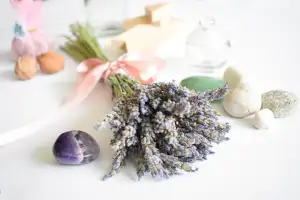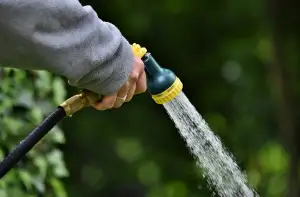Unlock the Secrets: Master the Art of Cleaning a Cast Iron Skillet at Home

Cleaning a cast iron skillet is not just about maintaining its appearance, but also ensuring its longevity and performance. A well-cleaned skillet will not only cook food evenly but also retain flavors and prevent rusting. Neglecting proper cleaning can lead to a buildup of residue and bacteria, affecting the taste and quality of your meals. In this article, we will guide you through the process of mastering the art of cleaning a cast iron skillet at home, so you can continue to enjoy delicious meals for years to come.
Gather necessary materials for cleaning
Before you embark on the journey of cleaning your cast iron skillet, it's important to gather all the necessary materials. This will ensure that you have everything you need at hand, making the process much smoother.
First and foremost, you will need a gentle scrub brush or sponge. Avoid using harsh abrasive materials as they can damage the seasoning of your skillet. Additionally, make sure to have mild dish soap specifically designed for cast iron cookware.
Next, grab a clean towel or paper towels to dry the skillet after washing. It's also helpful to have a lint-free cloth or paper towel for applying oil during the seasoning process.
Lastly, don't forget about heat-resistant gloves or oven mitts. These will come in handy when handling the hot skillet during cleaning and seasoning.
By gathering these essential materials beforehand, you'll be well-prepared to tackle the task of cleaning your cast iron skillet with ease and efficiency.
Preparing the cast iron skillet for washing
Before you start cleaning your cast iron skillet, it's important to prepare it properly. Begin by removing any food residue or stuck-on bits using a stiff brush or scraper. Avoid using soap at this stage, as it can strip away the skillet's seasoning. Next, rinse the skillet under hot water to remove any loose debris. Gently scrub the surface with a sponge or non-abrasive brush to ensure all particles are removed. Finally, dry the skillet thoroughly using a clean towel to prevent rusting. With these steps complete, your cast iron skillet is now ready for the next stage of cleaning.
Cleaning the cast iron skillet
Cleaning the cast iron skillet is a crucial step to maintain its longevity and ensure optimal cooking performance. After preparing the skillet for washing, it's time to tackle the cleaning process. Start by using a non-abrasive sponge or brush to gently scrub away any food residue or stuck-on particles. Avoid using soap as it can strip away the skillet's seasoning. Instead, rely on hot water and elbow grease to remove any stubborn bits. For tougher stains, sprinkle some coarse salt onto the skillet and scrub in circular motions. Rinse thoroughly with hot water to remove all traces of salt and debris. Remember, never soak a cast iron skillet as it can lead to rusting. Once cleaned, dry the skillet completely using a kitchen towel or by placing it over low heat on the stovetop for a few minutes.
Drying and seasoning the cast iron skillet
Drying and seasoning the cast iron skillet is a crucial step to ensure its longevity and maintain its non-stick surface. After cleaning, it's important to thoroughly dry the skillet to prevent rusting. To do this, use a clean towel or paper towels to remove any excess moisture.
Once the skillet is dry, it's time to season it. Seasoning involves applying a thin layer of oil to the surface of the skillet to create a protective barrier against rust and enhance its non-stick properties. Start by heating the skillet over medium heat for a few minutes until it becomes warm.
Next, apply a small amount of cooking oil or fat to a paper towel or cloth and rub it all over the inside and outside of the skillet, including the handle. Make sure to coat every inch of the surface evenly. Be cautious not to use too much oil as it may result in a sticky residue.
After applying the oil, place the skillet upside down in an oven preheated to 350°F (175°C). This allows any excess oil to drip off and prevents pooling. Let it bake for about an hour, then turn off the oven and let the skillet cool completely inside.
The process of drying and seasoning helps create a natural non-stick coating on your cast iron skillet while preventing rust formation. It also adds flavor and depth to your future culinary creations.
Remember that seasoning is an ongoing process. The more you cook with your cast iron skillet, the better seasoned it becomes. Regularly using your skillet will help maintain its seasoned surface and improve its performance over time.
By following these steps for drying and seasoning your cast iron skillet, you can ensure that it remains in excellent condition for years to come. So go ahead, unlock the secrets of cleaning and caring for your cast iron skillet, and enjoy cooking with this versatile kitchen tool!
Storing the cast iron skillet properly
Storing the cast iron skillet properly is crucial to maintain its quality and prevent rusting. After cleaning and drying the skillet, make sure it is completely cool before storing. Avoid stacking other cookware on top of it as this can cause damage. To prevent moisture buildup, place a paper towel or cloth inside the skillet to absorb any excess moisture. Store the skillet in a dry place with good air circulation, away from humidity and direct sunlight. If you prefer to stack your skillets, use paper towels or silicone liners between each one to prevent scratching. By following these storage tips, you can ensure your cast iron skillet stays in pristine condition for years to come.
In conclusion, mastering the art of cleaning a cast iron skillet is essential for maintaining its longevity and ensuring optimal cooking performance. By following the steps outlined in this article, you can easily clean your skillet at home.
To maintain a clean cast iron skillet, remember these final tips:
1. Avoid using harsh detergents or abrasive scrubbers that can strip away the seasoning.
2. Always dry your skillet thoroughly after washing to prevent rust formation.
3. Regularly season your skillet with a thin layer of oil to keep it well-protected.
4. Store your skillet in a dry place with good air circulation to prevent moisture buildup.
By incorporating these practices into your cleaning routine, you'll be able to enjoy the wonders of cooking with a perfectly clean and well-maintained cast iron skillet for years to come. Happy cooking!
Published: 13. 12. 2023
Category: Home



